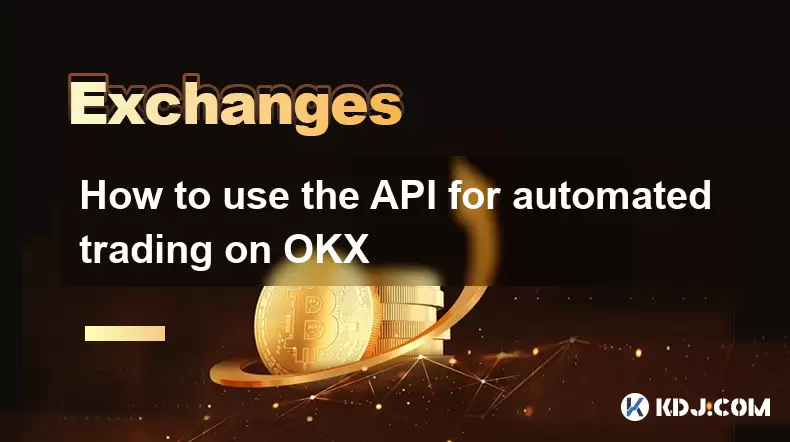-
 Bitcoin
Bitcoin $116400
0.87% -
 Ethereum
Ethereum $3819
3.86% -
 XRP
XRP $3.048
1.62% -
 Tether USDt
Tether USDt $1.000
0.03% -
 BNB
BNB $777.2
0.60% -
 Solana
Solana $169.3
0.46% -
 USDC
USDC $0.0000
0.02% -
 TRON
TRON $0.3414
2.06% -
 Dogecoin
Dogecoin $0.2126
3.33% -
 Cardano
Cardano $0.7527
1.21% -
 Hyperliquid
Hyperliquid $38.86
1.02% -
 Sui
Sui $3.683
5.27% -
 Stellar
Stellar $0.4048
1.45% -
 Chainlink
Chainlink $17.91
6.62% -
 Bitcoin Cash
Bitcoin Cash $576.9
1.29% -
 Hedera
Hedera $0.2487
1.03% -
 Ethena USDe
Ethena USDe $1.001
-0.01% -
 Avalanche
Avalanche $22.46
1.07% -
 Litecoin
Litecoin $120.8
1.69% -
 UNUS SED LEO
UNUS SED LEO $8.963
-0.30% -
 Toncoin
Toncoin $3.301
2.33% -
 Shiba Inu
Shiba Inu $0.00001250
1.13% -
 Uniswap
Uniswap $10.06
3.45% -
 Polkadot
Polkadot $3.731
1.56% -
 Dai
Dai $1.000
0.01% -
 Bitget Token
Bitget Token $4.416
1.58% -
 Cronos
Cronos $0.1482
3.73% -
 Monero
Monero $250.0
-12.34% -
 Pepe
Pepe $0.00001075
2.16% -
 Aave
Aave $274.6
4.17%
How to find my transaction ID on Gemini
A transaction ID (TXID) on Gemini is a unique blockchain hash for crypto withdrawals, essential for tracking and verifying fund transfers on networks like Bitcoin or Ethereum.
Aug 08, 2025 at 12:50 am

Understanding the Transaction ID in Cryptocurrency Exchanges
A transaction ID (TXID) is a unique alphanumeric string that identifies a specific transfer of cryptocurrency on a blockchain. When using a platform like Gemini, every withdrawal or deposit involving blockchain transactions is assigned a distinct TXID. This identifier allows users and support teams to track the status, origin, and destination of funds. The TXID is essential for verifying that a transaction was processed correctly and for troubleshooting delays or errors. Without this ID, confirming the movement of funds across decentralized networks becomes nearly impossible.
The TXID is generated by the blockchain network, not by Gemini itself. However, Gemini provides access to this information through its interface once a transaction is initiated. It’s important to note that only transactions involving actual blockchain transfers—such as sending crypto from your Gemini wallet to an external wallet—will have a TXID. Internal transfers between Gemini users or fiat deposits do not generate a blockchain TXID.
Navigating the Gemini Dashboard to Locate Transaction History
To begin finding your transaction ID, log in to your Gemini account via the official website or the mobile application. Once authenticated, navigate to the "Balances" section. This area displays all cryptocurrencies and fiat currencies currently held in your account. Select the specific asset involved in the transaction—for example, BTC, ETH, or USDC—by clicking on it.
After selecting the asset, look for an option labeled "Transaction History", "Activity", or "Transfers". This section logs every inbound and outbound movement related to that asset. Transactions are listed chronologically, with the most recent at the top. Each entry includes details such as date, amount, type (deposit or withdrawal), and status. Withdrawals to external addresses are the transactions that will have a TXID associated with them.
Identifying Withdrawal Transactions with a Blockchain TXID
Within the transaction history, focus on entries marked as "Withdrawal" or "Sent". These are the only types of transactions that generate a blockchain transaction ID. Click on the specific withdrawal you wish to investigate. A detailed pop-up or expanded view will appear, showing additional information.
In this detailed view, locate the field labeled "Transaction ID", "TXID", or "View on Blockchain". This field contains the unique hash, typically a long string of letters and numbers. For example, a Bitcoin TXID might look like:a1b2c3d4e5f678901234567890abcdef1234567890abcdef1234567890abcd.
Clicking on the TXID often opens a new tab in a blockchain explorer such as Blockstream.info for Bitcoin or Etherscan.io for Ethereum, allowing you to verify the transaction's confirmation status and network path.
Accessing Transaction Details via the Gemini Mobile App
The Gemini mobile app offers the same functionality as the web platform. Open the app and tap on the "Balances" tab at the bottom of the screen. Select the cryptocurrency you transferred. Tap on "Transaction History" to view all related movements.
Find the withdrawal transaction in the list. Tap on it to expand the details. The TXID will be visible under labels such as "Transaction Hash" or "Blockchain Transaction ID". If the ID is too long to display fully, there may be a "Copy" button or an option to view the full string. Use this to copy the TXID for external verification or customer support inquiries.
Some users may not see the TXID immediately after initiating a withdrawal. This delay occurs because Gemini processes withdrawals in batches or waits for internal confirmations. The TXID appears only after the transaction is broadcast to the blockchain. If the status shows "Processing" or "Pending", the TXID is not yet available.
Using the Gemini Advanced Trade Interface for Transaction Tracking
For users who operate through Gemini Advanced Trade, the process differs slightly. Log in to the Advanced Trade platform and navigate to the "Transfers" section, usually located in the top menu or under an account dropdown. Select "Withdrawals" or "Deposit & Withdrawal History".
Filter the list by cryptocurrency and date range if necessary. Locate the specific withdrawal. Hover over or click the entry to reveal additional details. The transaction ID will be listed alongside the network used (e.g., Bitcoin Network, Ethereum ERC-20). This interface may also display the miner fee, confirmation count, and destination address.
If you’re reconciling transactions for accounting or verification purposes, export the transaction history by selecting "Export CSV" or a similar option. The downloaded file will include TXIDs for all blockchain withdrawals, enabling offline tracking and record-keeping.
Common Issues and Troubleshooting When Finding Your TXID
Some users report not seeing a TXID even after a withdrawal appears completed. This issue typically arises when the transaction is still in pending state on the blockchain. Gemini may display "Completed" internally while the network has not yet confirmed the transaction. Wait a few minutes and refresh the page.
If the transaction was a deposit to Gemini from an external wallet, the TXID was generated by the sender’s wallet or exchange, not by Gemini. In this case, check the sending platform for the TXID. Gemini will display the deposit in your history and may show the TXID if it was included in the transaction data.
Network congestion can delay the appearance of the TXID. High traffic on networks like Ethereum may cause delays in transaction propagation. Monitor the blockchain explorer using the destination address if the TXID is not yet visible on Gemini.
Frequently Asked Questions
Q: Why can’t I see a transaction ID for my deposit on Gemini?
A: Deposits made to Gemini from external wallets do not generate a TXID within Gemini’s system. The TXID originates from the sending platform. You must retrieve it from the wallet or exchange you used to send the funds. Gemini will record the deposit and may display the TXID if it’s included in the incoming transaction data.
Q: Is the Gemini transaction ID the same as the blockchain transaction hash?
A: Yes. The transaction ID shown on Gemini is the actual blockchain transaction hash. It is not a Gemini-specific reference. This hash is generated by the blockchain network when the transaction is confirmed and can be used on blockchain explorers to verify the transaction independently.
Q: Can I find a TXID for a bank transfer or ACH deposit on Gemini?
A: No. Bank transfers, ACH deposits, and wire transfers are fiat transactions processed through traditional banking networks. These use bank reference numbers or ACH trace IDs, not blockchain TXIDs. Such identifiers can be found in your bank statement or Gemini’s deposit history under "Fiat Transactions".
Q: What should I do if the TXID on Gemini doesn’t appear on a blockchain explorer?
A: First, confirm that you’re using the correct blockchain explorer for the network—e.g., Etherscan for Ethereum, not Bitcoin. Ensure the TXID was copied completely without extra spaces. If the TXID still doesn’t appear, the transaction may not have been broadcast yet. Wait 10–15 minutes and retry. If unresolved, contact Gemini support with the withdrawal details.
Disclaimer:info@kdj.com
The information provided is not trading advice. kdj.com does not assume any responsibility for any investments made based on the information provided in this article. Cryptocurrencies are highly volatile and it is highly recommended that you invest with caution after thorough research!
If you believe that the content used on this website infringes your copyright, please contact us immediately (info@kdj.com) and we will delete it promptly.
- Pi Coin's dApp and AI Potential: Building a Decentralized Future
- 2025-08-08 02:30:12
- Bitcoin, Greenidge, and Liquidity: Navigating the Crypto Currents in NYC
- 2025-08-08 02:30:12
- Crypto Phishing Alert: $3 Million USDT Loss Highlights DeFi Risks
- 2025-08-08 01:10:12
- Crypto Presale Mania: Is Punisher Coin the High ROI King?
- 2025-08-08 01:10:12
- Online Betting, Platforms & Crypto Access: What's Hot in 2025
- 2025-08-08 00:50:12
- Layer Brett: The Meme Coin Primed for 100x Gains?
- 2025-08-08 01:50:12
Related knowledge

How to deposit USD on Bitstamp
Aug 07,2025 at 05:18pm
Understanding Bitstamp and USD DepositsBitstamp is one of the longest-standing cryptocurrency exchanges in the industry, offering users the ability to...

How to find my transaction ID on Gemini
Aug 08,2025 at 12:50am
Understanding the Transaction ID in Cryptocurrency ExchangesA transaction ID (TXID) is a unique alphanumeric string that identifies a specific transfe...

How to set up custom price alerts on Bybit
Aug 07,2025 at 04:31pm
Understanding Price Alerts on BybitPrice alerts on Bybit are essential tools for traders who want to stay informed about significant price movements i...

How to use the API for automated trading on OKX
Aug 07,2025 at 05:21pm
Understanding the OKX API for Automated TradingThe OKX API provides a powerful interface for users to automate their trading strategies, access real-t...

How to trade forex pairs on Kraken
Aug 07,2025 at 11:49pm
Understanding Forex Pairs on KrakenKraken is primarily known as a cryptocurrency exchange, but it also supports select forex pairs through its Kraken ...

How to claim airdropped tokens on Gate.io
Aug 07,2025 at 04:01pm
Understanding Airdropped Tokens on Gate.ioAirdropped tokens are digital assets distributed for free by blockchain projects to promote awareness, incen...

How to deposit USD on Bitstamp
Aug 07,2025 at 05:18pm
Understanding Bitstamp and USD DepositsBitstamp is one of the longest-standing cryptocurrency exchanges in the industry, offering users the ability to...

How to find my transaction ID on Gemini
Aug 08,2025 at 12:50am
Understanding the Transaction ID in Cryptocurrency ExchangesA transaction ID (TXID) is a unique alphanumeric string that identifies a specific transfe...

How to set up custom price alerts on Bybit
Aug 07,2025 at 04:31pm
Understanding Price Alerts on BybitPrice alerts on Bybit are essential tools for traders who want to stay informed about significant price movements i...

How to use the API for automated trading on OKX
Aug 07,2025 at 05:21pm
Understanding the OKX API for Automated TradingThe OKX API provides a powerful interface for users to automate their trading strategies, access real-t...

How to trade forex pairs on Kraken
Aug 07,2025 at 11:49pm
Understanding Forex Pairs on KrakenKraken is primarily known as a cryptocurrency exchange, but it also supports select forex pairs through its Kraken ...

How to claim airdropped tokens on Gate.io
Aug 07,2025 at 04:01pm
Understanding Airdropped Tokens on Gate.ioAirdropped tokens are digital assets distributed for free by blockchain projects to promote awareness, incen...
See all articles

























































































